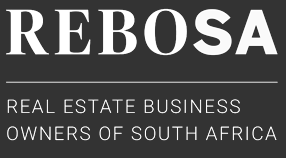Joburg has revival plan
Category Suburb Focus
The City of Joburg has announced a new long-term plan to breathe life back into the inner city.
The Star reported earlier this month that major property investors in the inner city were threatening to pull out of the inner city, and were discouraging new investors from coming into the CBD after a spate of new building hijackings.
The Inner City Roadmap, spearheaded by Joburg mayor Parks Tau, has taken over from where the Inner City Charter was developed in the previous administration.
"The Inner City Charter was a regenerative strategy focusing on property and environmental upgrades. The Inner City Roadmap is a transformative, precinct-based approach," said Roslynn Greeff, member of the mayoral committee for development planning and a member of the mayoral committee assigned to Region F (inner city).
The battle against crime, grime and urban decay started in 2007 after the inner city lost its allure following the flight of investors to upmarket areas such as Rosebank and Sandton.
Under the Inner City Roadmap, the fight to restore it to its former glory has now moved up a gear.
In his State of the Province address, Gauteng Premier David Makhura said the provincial government would, over the next five years, mobilise R10 billion in public and private investments to regenerate the Joburg CBD.
These two bold steps are probably the strongest indications of the city and the Gauteng Provincial Government's determination to deal a decisive blow to the degeneration of the inner city, once the pride of many who live, work and play in Joburg as well as the visitors, said Greeff. "We are reclaiming the heart and soul of the inner city," she said.
Almost R2bn has been spent - greening public spaces, upgrading derelict buildings, developing the Rea Vaya Bus Rapid Transit system, upgrading housing and other infrastructure, and making the city more eco-friendly - under the Inner City Charter, she said.
"At times, the heart of the city seems like a huge construction site - first, with the construction of the Rea Vaya system, lanes and stations, and then with the laying out of cycling lanes and the building of new malls."
Unlike the Inner City Charter, whose lifespan was five years, the Inner City Roadmap is a long-term strategy.
Speaking on the hijacking of buildings, Shaun O'Shea, spokesman for Region F, said that in the past year alone, 1 294 people had been arrested. Of these, 57 had been prosecuted and 37 convicted. At least 45 buildings had been secured and handed back to their owners.
"Building hijacking is an ongoing problem. Getting these people to justice is a lengthy process, but we are on top of it," he said.
The city recently passed the problem properties bylaw, which will enable it to address slumlords more effectively.
"The number of problem properties has declined. We have good relations with the police, the Hawks, SA Revenue Service, National Prosecuting Authority and other stakeholders," said O'Shea.
Major companies, led by Absa and others, were returning to the inner city.
"Our vision is a 24-hour city, where people can work, live and play. So much work has been done over the past 10 years to regenerate the inner city. There has been so much development by the city and its partners, including private property developers who have invested millions into projects such as Maboneng, Westgate and Newtown precincts. Gandhi Square has been regenerated too," he said.
The South Hills mixed housing development, which forms part of the Turffontein Corridor, is expected to get off the ground soon. More than 5 000 mixed-housing units are to be built in the area, which is 6km from the Joburg CBD.
O'Shea admitted, though, there were still challenges.
"Taxi and waste management are still big issues but we are working around the clock to address them."
Crime has also decreased in the inner city since CCTV cameras were installed.
Author: The Star




